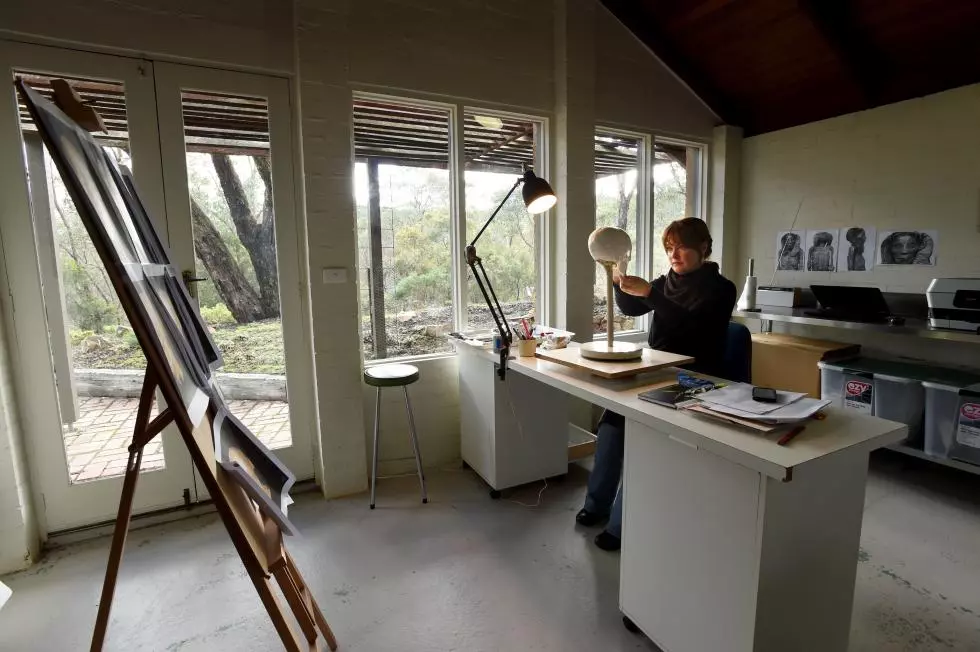For almost a century, the basement of a medical building at Australia's University of Melbourne has been home to a mummified human head of unknown origin. Now, using CT scans, 3D printing, forensic science and sculpture, a multi-disciplinary team has reconstructed the face of a young Egyptian woman who lived and died over 2,000 years ago, in an attempt to learn more about her life, death, health and diet.
With her true identity lost to history, the team named the woman Meritamun, meaning "beloved of (the god) Amun". In fact, nobody quite knows how the head came to be in the university's possession, but a leading theory is that Professor Frederic Wood Jones, who became the head of anatomy in the 1930s, brought it back from archaeological surveys in Egypt.
A recent CT scan quelled concerns that the head may be deteriorating – to the contrary, the skull proved to be very well preserved. That in turn inspired the team to conduct further studies on it, including using the CT data to 3D print a model of the skull, which formed the basis of a sculpture of Meritamun's face.
"The CT scan opened up a whole lot of questions and avenues of enquiry and we realized it was a great forensic and teaching opportunity in collaborative research," says Dr Ryan Jefferies, the curator of the museum where the head resides.
The first steps were to find more clues about who Meritamun was. Dr Jane Davey, a forensic Egyptologist at nearby Monash University, was able to confirm she was both ancient Egyptian and a woman. The size and shape of the jaw, narrow roof of the mouth and the rounder eye sockets were all clues in determining the mummy's gender. Her height can't be accurately estimated without bones from other parts of the body. Davey pegs Meritamun at roughly 162 cm (5.3 ft) tall, on the general understanding of the height of people in ancient times.
Although estimated to have been between 18 and 25 years old at the time of death, just how old Meritamun was now also required a little educated guesswork. Davey estimates she lived sometime between 1500 BCE and 331 BCE, and the fine linen of her bandages suggests that the woman was likely from a family of high status. A sample of tissue from the head is currently undergoing radiocarbon dating, which should help narrow that window of time.
"There is always a lot of mystery to unravel in forensic Egyptology and it is why it is so important to keep an open mind and follow the evidence," says Davey.
The CT scans of the skull are also clear enough to provide evidence of Meritamun's health at the time of death. Not only do the images show that the woman was suffering from two tooth abscesses, but due to several clear areas of thin, sunken bone, masters student Stacey Gorski was able to determine she was suffering from anaemia.
"Anaemia is a very common pathology that is found in bodies from ancient Egypt, but it usually isn't very clear to see unless you can look directly at the skull," says Gorski. "But it was completely clear from just looking at the images. The fact that she lived to adulthood suggests that she was infected later in life."
Analyzing a rehydrated tissue sample, further forensic research may be able to determine the cause of the anaemia, as well as Meritamun's general diet. Armed with that information, the researchers may be able to broadly locate the general area of Egypt she may have hailed from.
The face itself, reconstructed by forensic sculptor Jennifer Mann (as seen in the video above), is the most striking outcome of that CT scan. With the 3D-printed skull as the base, the flesh was filled in using a series of markers that indicate how deep the tissue likely was at key points around the face, based on generalized data of the population of modern Egypt.
Soft areas like the nose and ears were reconstructed based on similar averages, as well as dimensions extruded out from the nasal cavity. To top it off, Meritamun's hair was based on that of Lady Rai, a mummy on display in Cairo.
"The idea of the project is to take this relic and, in a sense, bring her back to life by using all the new technology," says Dr Varsha Pilbrow, an anthropologist supervising Gorski's forensic pathology work. "This way she can become much more than a fascinating object to be put on display. Through her, students will be able to learn how to diagnose pathology marked on our anatomy, and learn how whole population groups can be affected by the environments in which they live."
The team explains the project in the video below. (Videos courtesy of the University of Melbourne under a CC BY-ND 4.0 licence.)
Source: University of Melbourne







